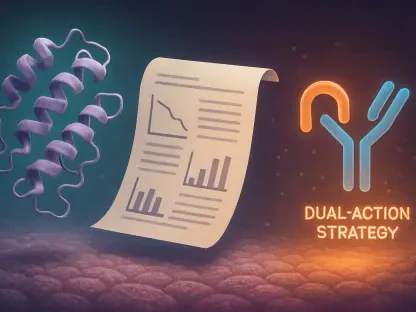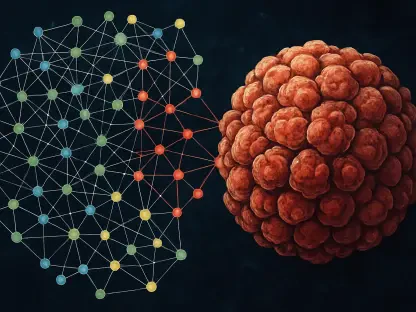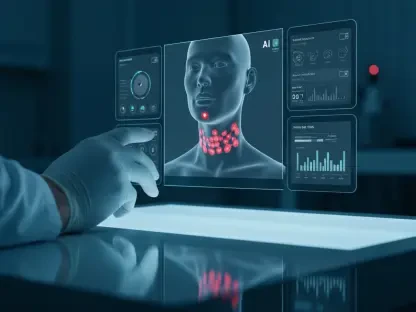The subject of this article is the significant strides made in genetic research that have led to the diagnosis of over 500 European patients with rare and previously undiagnosed conditions. This includes uncovering the roots of rare neurological disorders, severe intellectual disabilities, muscle diseases, and hereditary gastrointestinal cancer. The achievement, which stands as a beacon of hope for many, is the result of exceptional collaboration between the University of Tübingen, Radboud University Medical Center, and the National Center for Genomic Analysis in Barcelona.
The Power of Collaborative Efforts
Uniting Experts Across Borders
Solve-RD involved the collaborative efforts of 300 experts from twelve European countries and Canada. The project’s main goal was to diagnose rare diseases by conducting a meticulous reanalysis of existing genome data from 6,447 patients and 3,197 unaffected family members. These efforts bore fruit as 506 patients and their families finally received a diagnosis. Remarkably, for 15% of these patients, the diagnoses came with leads for actionable steps, ranging from specific treatments to providing much-needed clarity and closure for the patients and their families.
The extensive collaboration in Solve-RD exemplifies the importance of pooling resources and expertise across borders. By bringing together clinical geneticists, data scientists, and a cadre of other experts, the project managed to uncover genetic anomalies that had eluded identification during previous analyses. This transnational approach allowed researchers to share insights and methodologies, fostering an environment where rare genetic conditions could be better understood and addressed. The sheer international scope of the effort indicates that collaboration in genomic research might indeed be the key to solving the mysteries of rare diseases.
Establishing a Rigorous Review Framework
Solve-RD is particularly noteworthy because of its rigorous two-level expert review framework. This framework allows for analyses to be reviewed by experts from diverse fields, including clinical genetics and data science, ensuring that the diagnoses are both accurate and reliable. This systematic approach has proved highly effective in diagnosing rare genetic conditions, and its structured and repeatable process is now being expanded through the recently launched European Rare Disease Research Alliance (ERDERA).
ERDERA builds upon the success of Solve-RD by broadening the scope of research and scaling the approach. Coordinated by INSERM in France, ERDERA brings together over 180 organizations with the aim of expediting the diagnosis process for rare disease patients. This initiative emphasizes collaboration with additional European medical centers, thereby expanding its pool of expertise and data. Such partnerships are crucial as they enhance the ability to help undiagnosed patients by leveraging broader datasets and advanced diagnostic techniques that go beyond traditional genome sequencing.
Diagnostic Breakthroughs and Unified Processes
Achieving Significant Milestones
Under the ERDERA framework, researchers from the University of Tübingen continue to lead the Clinical Research Network diagnostic stream. They work in tandem with Radboud University Medical Center, Barcelona, and a host of other European partners to massively scale up patient data reanalysis. Their target is ambitious: to expand from analyzing 10,000 datasets to over 100,000. This expanded effort encompasses a wider range of rare genetic conditions and employs advanced techniques like long-read genome sequencing, optical genome mapping, and RNA sequencing. These methods not only promise to accelerate diagnoses but also hold the potential to find treatment options for conditions that have remained unresolved for years.
Holm Graessner, the Solve-RD coordinator, heralds this approach as a “major step forward” in rare disease research in Europe. Achieving diagnoses for more than 500 patients is a milestone that underscores the effectiveness of reanalyzing unsolved patient data. Graessner acknowledges the significance of continuing and scaling this approach through ERDERA to help more patients and families across Europe. This ability to provide answers where there were none before is transformative, offering new hope to those affected by rare diseases.
Consistency in Diagnostic Approaches
Consistency and unity in diagnostic approaches are essential to the success of these initiatives. Researchers agreed on common diagnostic processes and strategies, including which genes and variant types to investigate. This uniformity ensures that diagnostic approaches remain consistent across different countries, paving the way for future international collaborations. The success of the project demonstrates that a synchronized strategy can be immensely effective in tackling the intricate challenges posed by rare genetic conditions.
ERDERA’s commitment to such unified diagnostic processes is emblematic of the project’s long-term vision. Their approach aims not only to diagnose but also to offer potential treatments, thereby making a lasting difference in the lives of patients worldwide. By setting a consistent standard for genomic research, ERDERA and Solve-RD lay down a framework that can be adopted and adapted by future research initiatives. This kind of foresight and strategy is essential for the continued advancement of rare disease diagnosis.
Evolving Techniques and Long-term Goals
Leveraging Advanced Genomic Techniques
The concerted effort to leverage advanced genomic techniques signifies a new era in rare disease research. By employing methods such as long-read genome sequencing, optical genome mapping, and RNA sequencing, researchers hope to uncover genetic anomalies that have remained hidden. These techniques represent the cutting-edge of genomic science, offering the ability to inspect genetic information in unparalleled detail. The advancements not only hold the promise of faster diagnoses but also the potential for uncovering treatment options that have previously been out of reach.
This sophisticated approach to genomic research requires a high level of expertise and coordination among the participating institutions. Each technique brings its own set of advantages and challenges, necessitating a comprehensive understanding and careful execution. Through collaboration, researchers can push the boundaries of what is achievable in genomic science, paving the way for future breakthroughs. The ultimate goal remains clear: to provide answers and potential treatments to as many patients with rare diseases as possible.
Commitment to Patient Impact
Lisenka Vissers, a professor in Translational Genomics at Radboud University Medical Center, emphasizes the groundbreaking nature of the project’s findings. She notes that the extensive reanalysis allowed researchers to find similarities across patient data, leading to diagnoses even for those who had been ill for decades and participated in numerous studies. This illustrates the innovative potential and tangible impact this research can have on patients’ lives. The emotional and psychological relief of finally having a diagnosis cannot be overstated, as it provides a path forward where there was previously only uncertainty.
The commitment to patient impact is not just a talking point but a practice embedded in the very fabric of these initiatives. Researchers are dedicated to not only diagnosing but also providing actionable steps whenever possible. For patients and their families, receiving a diagnosis after years of uncertainty can be a life-changing event. It opens up new possibilities for managing the condition, accessing appropriate care, and planning for the future. The human element is a driving force behind the scientific endeavors, underscoring the real-world implications of this groundbreaking research.
Overcoming Challenges and Future Prospects
Addressing Logistical and Legislative Challenges
The successful collaboration among European researchers highlights not only the importance of shared databases and collective expertise but also the logistical and legislative hurdles that must be overcome. Researchers had to agree on methodologies for analyzing each condition, including which genes and variant types to examine. These collective efforts led to significant logistical feats, overcoming challenges posed by varying national legislative differences and regulations. The ability to navigate these complex landscapes demonstrates the resilience and dedication of the research teams.
Addressing these challenges is crucial for the ongoing success and expansion of initiatives like Solve-RD and ERDERA. The collaborative model established by these projects provides a roadmap for future research efforts, particularly in navigating the intricacies of international cooperation. The lessons learned from overcoming these challenges can inform future endeavors, making it easier to coordinate and implement large-scale genomic research projects. Such efforts underscore the importance of a cohesive strategy in tackling the multifaceted challenges of rare disease research.
A Model for Future Research
This article highlights remarkable advancements in genetic research that have led to the diagnosis of over 500 European patients suffering from rare and previously undiagnosed conditions. These conditions range from rare neurological disorders to severe intellectual disabilities, muscle diseases, and hereditary gastrointestinal cancers. This breakthrough, which offers hope to many affected individuals and their families, showcases the exceptional work of a collaborative effort involving the University of Tübingen, Radboud University Medical Center, and the National Center for Genomic Analysis in Barcelona.
The joint efforts of these prestigious institutions have not only identified the genetic foundations of these rare diseases but have also paved the way for new treatments and therapies. Genetic research, a field that continues to evolve rapidly, holds the potential to revolutionize how we understand and treat various conditions that were once considered untreatable. This milestone is particularly significant as it demonstrates how collaborative scientific endeavors can lead to substantial medical advancements, improving the quality of life for numerous patients.









